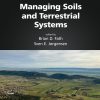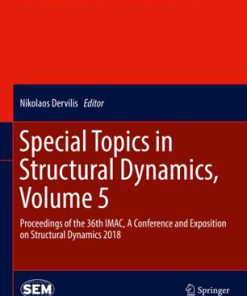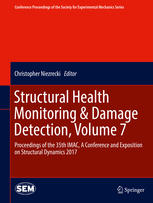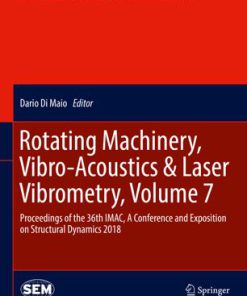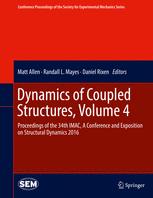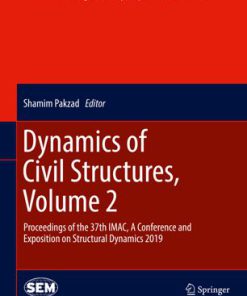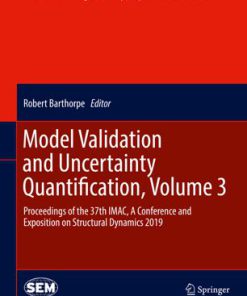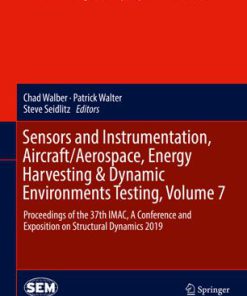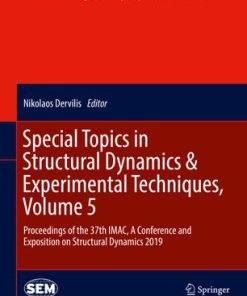Structural Health Monitoring Damage Detection and Mechatronics Volume 7 1st Edition by Alfred Wicks, Christopher Niezrecki ISBN 3319299565 9783319299563
$50.00 Original price was: $50.00.$25.00Current price is: $25.00.
Structural Health Monitoring Damage Detection and Mechatronics Volume 7 1st Edition by Alfred Wicks, Christopher Niezrecki – Ebook PDF Instant Download/Delivery: 3319299565, 978- 3319299563
Full download Structural Health Monitoring Damage Detection and Mechatronics Volume 7 1st Edition after payment
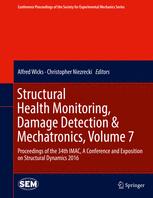
Product details:
ISBN 10: 3319299565
ISBN 13: 978-3319299563
Author: Alfred Wicks, Christopher Niezrecki
Structural Health Monitoring, Damage Detection & Mechatronics, Volume 7. Proceedings of the 34th IMAC, A Conference and Exposition on Dynamics of Multiphysical Systems: From Active Materials to Vibroacoustics, 2016, the seventh volume of ten from the Conference brings together contributions to this important area of research and engineering. The collection presents early fi ndings and case studies on fundamental and applied aspects of Structural Dynamics, including papers on:
• Structural Health Monitoring
• Damage Detection
• Numerical Modeling
• Mechatronics
• System Identifi cation
• Active Controls
Structural Health Monitoring Damage Detection and Mechatronics Volume 7 1st Table of contents:
Chapter 1: Development and Characterization of an ITO Nanocomposite Film Sensor for Damage Detection
- 1.1 Introduction: Overview of the ITO (Indium Tin Oxide) nanocomposite film sensor and its role in damage detection.
- 1.2 Surface Damage Detecting Film Nanocomposite: Description of the sensor’s capabilities and material characteristics.
- 1.3 Experimental Setup: The methodology and apparatus used to test the sensor.
- 1.4 Results and Discussions: Analysis of sensor performance in different conditions.
- 1.4.1 Surface Damage Detection: How the sensor detects surface damage.
- 1.4.2 Influence of Temperature: Impact of temperature variations on sensor performance.
- 1.4.3 Influence of Humidity: Influence of environmental humidity on detection accuracy.
- 1.5 Conclusion: Summary of findings and conclusions.
- References: Cited works supporting the study.
Chapter 2: Fiber Optic Sensor Arrays for Real-Time Virtual Instrumentation and Control of Flexible Structures
- 2.1 Introduction: Introduction to fiber optic sensor arrays for real-time monitoring.
- 2.2 Approach: The methodology used to design and implement the sensor arrays.
- 2.3 Finite Element Analysis: Use of computational modeling to simulate system behavior.
- 2.4 Model Formulation: Mathematical models used to represent sensor behavior.
- 2.5 FBG-IMU System Development (First Approach): Development of a system combining fiber Bragg grating (FBG) and inertial measurement units (IMU).
- 2.6 Second Approach of FBG-IMU: A different approach using the same technology for better results.
- 2.7 Results: Findings from the experimentation and simulations.
- 2.8 Conclusions and Future Work: Discussion of results and potential future improvements.
- References: Citations of prior works related to fiber optic sensors.
Chapter 3: On the Output-Only Vibration-Based Damage Detection of Frame Structures
- 3.1 Introduction: Introduction to using vibration-based techniques for damage detection in frame structures.
- 3.2 Output-Only Vibration-Based Damage Detection Methods: Techniques using only the output response for detecting damage.
- 3.3 Application: Identification and Damage Detection: Case study on applying the method to real structures.
- 3.3.1 Test Structure: Undamaged Condition
- 3.3.2 Test Structure: Damaged Condition
- 3.3.3 Simulation of the Structural Response
- 3.4 Results and Discussion:
- 3.4.1 Output-Only Modal Identification: Modal identification without input data.
- 3.4.2 Damage Detection: Effectiveness of the method in detecting damage.
- 3.5 Conclusions: Final conclusions drawn from the experiments.
- References: List of references used in the study.
Chapter 4: On the Influence of Sample Length and Measurement Noise on the Stochastic Subspace Damage Detection
- 4.1 Introduction: Discusses the impact of sample length and noise on damage detection.
- 4.2 Stochastic Subspace Damage Detection Technique: Detailed discussion of the subspace method for detecting damage.
- 4.2.1 Dynamic Equilibrium Equation
- 4.2.2 Output-Only Covariance Based Subspace System Identification
- 4.2.3 Residual Vector Formation
- 4.2.4 Hypothesis Test: Chi-square test methods for detecting damage.
- 4.3 Investigating the Effect of Noise and Number of Samples:
- 4.3.1 Effect of Number of Samples
- 4.3.2 Effect of Measurement Noise
- 4.4 Numerical Application: Case studies demonstrating the impact of sample number and noise.
- 4.5 Discussion and Conclusion: Analysis of the results and implications for damage detection methods.
- References: Cited works relevant to stochastic methods.
Chapter 5: Quantification of Structural Damage with Self-Organizing Maps
- 5.1 Introduction: Introduction to the use of Self-Organizing Maps (SOM) for damage quantification.
- 5.2 Qatar University Grandstand Simulator: Overview of the simulation model used for testing.
- 5.3 Verification of the Finite Element Model: Model validation to ensure accuracy in simulations.
- 5.4 The SOM-Based Damage Detection Algorithm:
- 5.4.1 Training of the SOMs: Process of training the self-organizing maps for damage detection.
- 5.4.2 Structural Damage Assessment: Applying SOMs to assess structural damage.
- 5.5 Numerical Demonstration of the Damage Detection Algorithm: Practical examples showing the algorithm’s effectiveness.
- 5.6 Discussion: Interpretation of the results and the method’s robustness.
- 5.7 Conclusion: Summary and potential improvements.
- References: Cited literature supporting the study.
Chapter 6: Accuracy Enhancement of a Device for Automated Underbridge Inspections
- 6.1 Introduction: Focus on improving the accuracy of automated underbridge inspection devices.
- 6.2 Method: Overview of the method used to enhance accuracy.
- 6.3 Results: Findings from the testing of the device.
- 6.4 Concluding Remarks: Final thoughts on the enhancement process and its potential impact.
- References: Relevant sources cited for the study.
Chapter 7: A Brief Overview of Mechatronics
- 7.1 Introduction: Introduction to mechatronics as an interdisciplinary field combining mechanics, electronics, and computing.
- 7.2 Background: Overview of the historical development of mechatronics.
- 7.3 Basic Microcontroller: Discussion of microcontroller fundamentals used in mechatronic systems.
- 7.4 Actuation: Explanation of actuators in mechatronic systems.
- 7.5 Sensors: Role of sensors in mechatronics.
- 7.6 Modeling/Simulation: The importance of modeling and simulation in system design.
- 7.7 Bus Structures: Overview of communication and power distribution systems in mechatronics.
- 7.8 Batteries: Role of power supply in mechatronic systems.
- 7.9 Conclusions: Summary of mechatronics fundamentals.
- References: Cited works in the field of mechatronics.
Chapter 8: Enhanced Vibration Damping by Means of a Negative Capacitance
- 8.1 Introduction: Introduction to the concept of negative capacitance for vibration damping.
- 8.2 Analytical Model of the Electro-Mechanical System: Mathematical model explaining the system.
- 8.3 Structure of the Electric Impedance: Explanation of electric impedance in the damping system.
- 8.4 Stability of the Electro-Mechanical System: Assessment of system stability when using negative capacitance.
- 8.5 Conclusion: Final thoughts on the efficacy of the negative capacitance technique.
- References: Cited research in the field of vibration damping.
People also search for Structural Health Monitoring Damage Detection and Mechatronics Volume 7 1st :
journal of civil structural health monitoring
vibration based structural health monitoring
bridge structural health monitoring
european workshop on structural health monitoring
an introduction to structural health monitoring
Tags:
Alfred Wicks,Christopher Niezrecki,Structural,Health,Monitoring,Damage,Detection,Mechatronics,Volume 7 1st
You may also like…
Engineering - Engineering Technology
Science (General) - International Conferences and Symposiums
Science (General) - International Conferences and Symposiums
Engineering - Engineering Technology
Engineering - Engineering Technology
Science (General) - International Conferences and Symposiums


